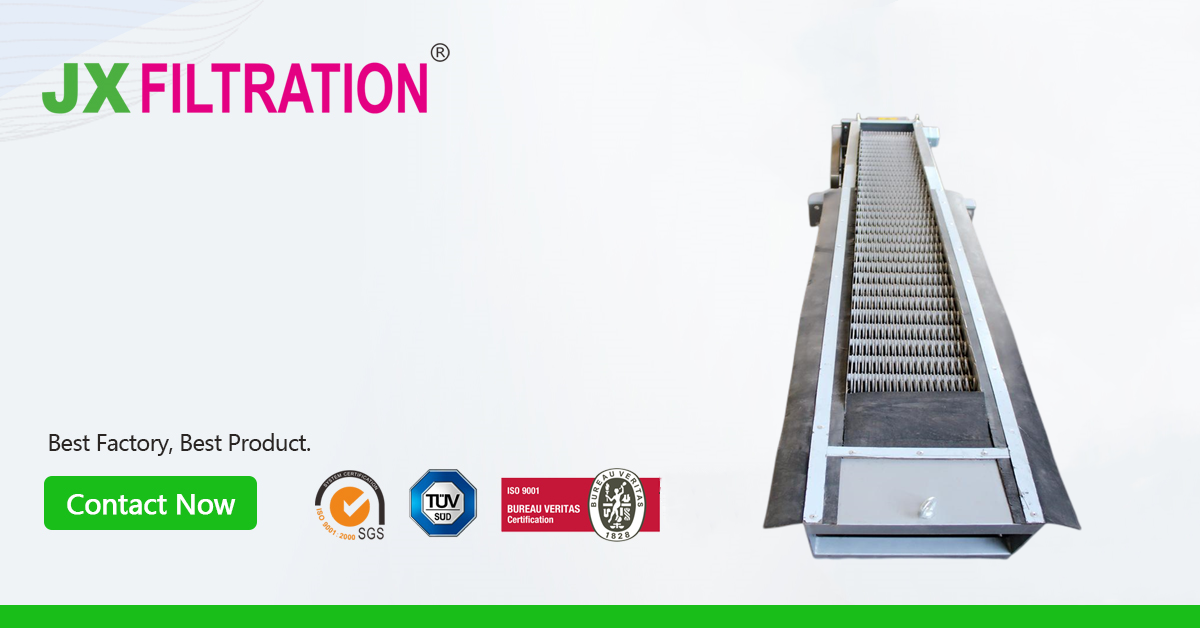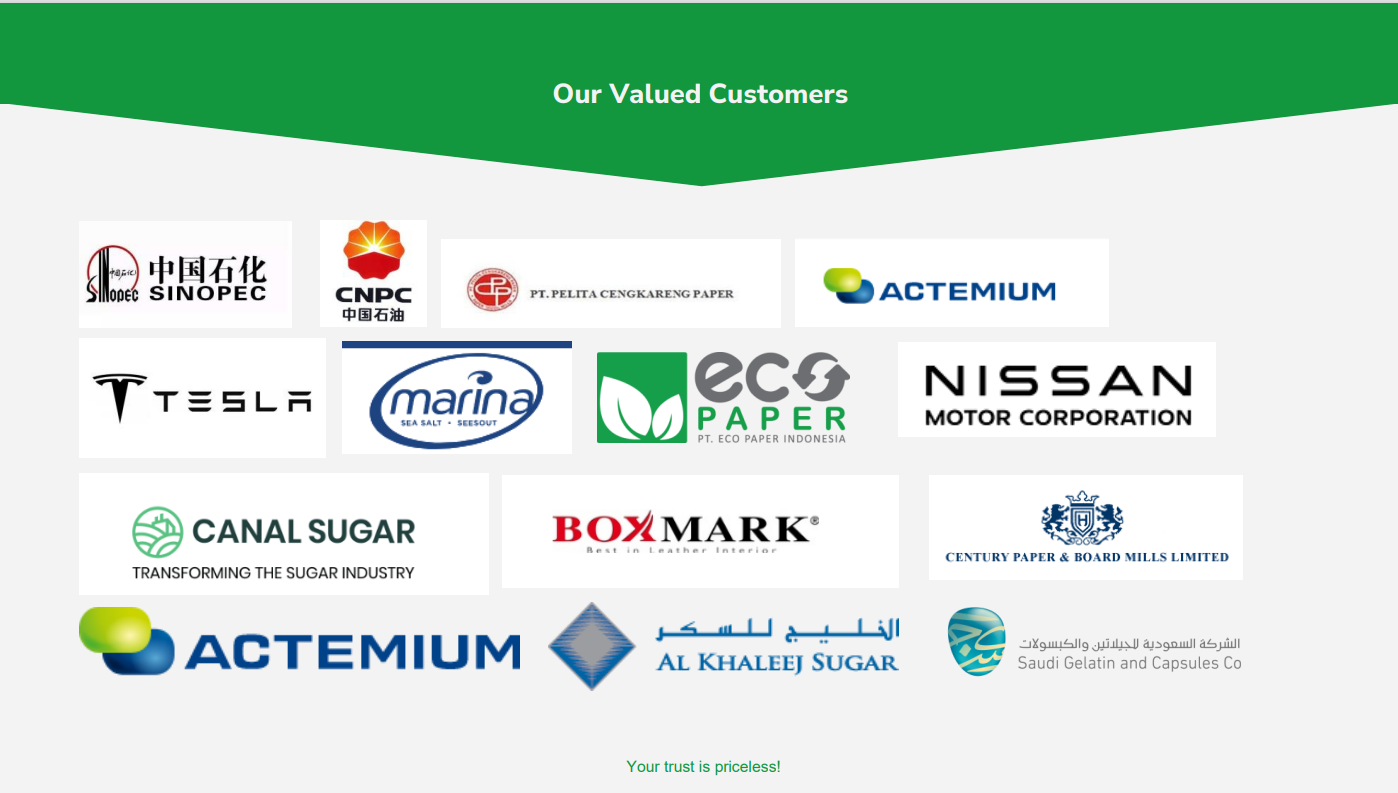Mechanical Bar Screen: Advantages and Characteristics
A Mechanical Bar Screen is a core piece of pretreatment equipment used at the headworks of wastewater treatment plants, pumping stations, and other water handling facilities. Its primary function is to automatically intercept and remove large suspended and floating solids (such as leaves, plastics, wood, and municipal solid waste) from the flow stream. This protects downstream equipment (like pumps, aerators, and sludge dewatering systems) from damage, clogging, and inefficiency.

- Key Advantages
Compared to manually cleaned screens, mechanical bar screens offer significant advantages:
- High Automation, Labor Savings
- This is their core advantage. The equipment can operate automatically based on a preset time interval (time control) or the water level difference across the screen (differential level control). This eliminates the need for constant operator attendance and heavy manual labor, drastically reducing labor costs and physical strain.
- High Efficiency and Continuous Operation
- Mechanical bar screens can operate 24/7, continuously removing incoming debris to keep the flow channel clear. Their cleaning speed is far superior to manual raking, making them essential for high-flow, high-solid-load applications (like municipal wastewater plants and combined sewer overflow stations). They effectively handle flow fluctuations and peak loads.
- Improved Working Conditions and Safety
- They remove personnel from direct contact with filthy, potentially toxic, and odorous environments, reducing health risks and safety hazards (e.g., falling into the channel). Better enclosed designs also help contain unpleasant odors.
- Protection of Downstream Processes
- By efficiently and promptly removing solids, they prevent common problems like pump impeller clogging, pipe blockages, and diffuser fouling. This ensures the stability and reliability of the entire treatment process and reduces overall maintenance costs.
- High Solids Capture and Dewatering
- Many mechanical screens are equipped with compaction or dewatering devices that squeeze water out of the captured waste (called "screenings"). This reduces the volume and weight of the waste, lowering subsequent transportation and disposal costs.
- Key Characteristics
The characteristics of mechanical bar screens are defined by their structure and operational mode. Common types include chain-driven, cable-guided, and continuous reciprocating screens. They generally share these traits:
- Clear Structural Components
- Bars: Typically made of metal (e.g., stainless steel) with set gaps between them (aperture size), which can be selected based on need (usually ranging from 1-50mm).
- Rake or Cleaning Teeth: The mechanism that scoops the debris off the bars and lifts it to the top.
- Drive Unit: Provides power, usually consisting of an electric motor and gear reducer.
- Transmission System: Such as chains, cables, or a hydraulic system, used to transfer power to the rake.
- Control System: The brain of the operation, enabling automatic/manual control, overload protection, and fault alarms.
- Discharge Mechanism: A wiper or chute that transfers the debris from the rake into a collection bin or conveyor.
- Flexible Operation Modes
- Intermittent Operation: Activates based on a timer or level differential signal. This saves energy and reduces wear.
- Continuous Operation: Runs non-stop in applications with very high debris loads.
- Overload Protection
- Equipped with mechanical (e.g., shear pins) or electrical (e.g., overload current sensors) safety devices. If the rake encounters an immovable object, the screen will automatically stop and trigger an alarm, protecting the core components from damage.
- Strong Adaptability
- Can be customized for different channel depths, widths, flow rates, and treatment requirements.
- Various types are available for different scenarios:
- Catenary (Cable-Guided): Suitable for very deep and wide channels.
- Chain-Driven: Robust and reliable, the most common type.
- Continuous Belt (Rake-Type): Compact structure, easy to install, often used in small to medium-sized channels.
- Step Screen: Excellent self-cleaning ability, can achieve very fine screening (1-6mm apertures).
- Corrosion-Resistant Design
- Since they operate in a perpetually wet and corrosive environment, critical components in contact with water (bars, rakes, chains) are typically made of stainless steel (e.g., SS304, SS316) or receive special anti-corrosion coatings (e.g., hot-dip galvanizing) to ensure a long service life.
In summary, the core value of mechanical bar screens lies in achieving long-term automated operation through the initial equipment investment, thereby significantly enhancing the efficiency, reliability, and safety of the pretreatment process while reducing overall operational costs. It is an indispensable key component in modern water treatment systems.
Contact us now for a tailored solution.
Julie
Email: sales@filtrationchina.com
Mobile / WA / WeChat: +86 159 2865 0174

